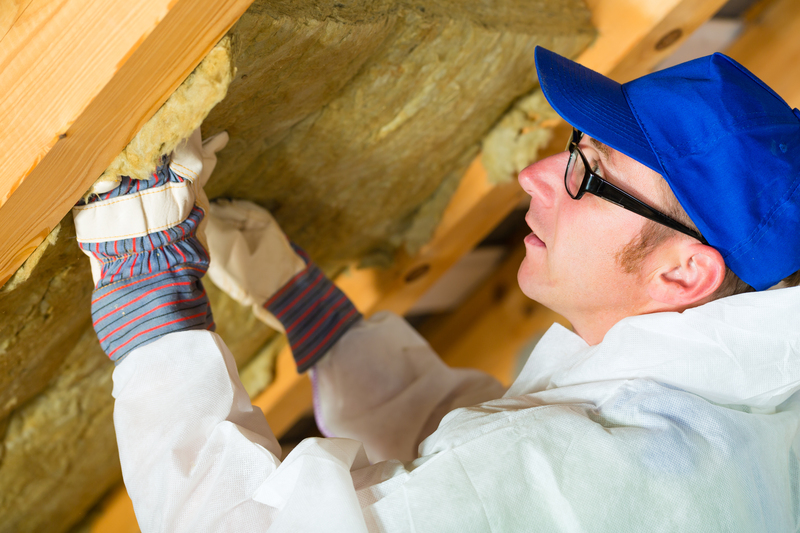How to Clean Your Home Sustainably
Posted on 15/02/2025
As environmental concerns increasingly make their way into the forefront of public consciousness, many individuals are seeking ways to make their daily routines more eco-friendly. One of the easiest ways to reduce your carbon footprint is by adopting sustainable cleaning practices. Traditional cleaning products and methods often rely on harsh chemicals that can be harmful to both the environment and your health. Luckily, there are numerous sustainable alternatives that can keep your home spotless without the negative impact. In this article, we'll delve into the various ways you can clean your home sustainably.
Why Choose Sustainable Cleaning?
Before diving into the specifics, it's important to understand why sustainable cleaning is essential. Conventional cleaning products often contain volatile organic compounds (VOCs) and other harmful chemicals that can affect indoor air quality and contribute to environmental pollution. Additionally, the production and disposal of these products often have a significant environmental footprint. By opting for sustainable cleaning methods, you can reduce exposure to these harmful substances and lessen your environmental impact.

Choosing Eco-Friendly Cleaning Products
The first step in sustainable cleaning is to select eco-friendly cleaning products. These products are often made from natural, biodegradable ingredients and come in recyclable or minimal packaging. Here are some things to look for when choosing eco-friendly products:
- Non-toxic Ingredients: Ingredients like vinegar, baking soda, and essential oils are not only effective but also safe for the environment.
- Biodegradable: Make sure the product breaks down naturally without harming the environment.
- Recyclable Packaging: Opt for products that come in recycled or recyclable containers to minimize waste.
- Eco-Certifications: Look for certifications like "Green Seal," "Ecologo," or "USDA Organic" to ensure that the product meets eco-friendly standards.
DIY Cleaning Solutions
Making your own cleaning solutions is another excellent way to clean sustainably. DIY cleaners are not only cost-effective but also allow you to control the ingredients, ensuring they are safe and eco-friendly. Here are some simple recipes you can try:
All-Purpose Cleaner
Mix equal parts of water and white vinegar in a spray bottle. Add a few drops of your favorite essential oil for a pleasant scent. This solution can be used on most surfaces, including countertops, glass, and stainless steel.
Glass Cleaner
Combine 2 cups of water, 1/2 cup of vinegar, and 1/4 cup of rubbing alcohol in a spray bottle. This mixture works great on windows and mirrors, leaving them streak-free.
Bathroom Scrub
Mix 1/2 cup of baking soda with enough liquid castile soap to form a paste. This scrub is perfect for cleaning tiles, sinks, and bathtubs without scratching the surfaces.
Reducing Waste
Sustainable cleaning isn't just about the products you use; it's also about reducing waste. Here are some tips to minimize waste while keeping your home clean:
- Reusable Cleaning Tools: Invest in reusable cloths, mop heads, and sponges. These can be washed and reused multiple times, reducing the need for disposable paper towels and wipes.
- Bulk Buying: Purchase cleaning supplies in bulk to reduce packaging waste. Many eco-friendly stores offer refills for common cleaning products.
- Upcycling: Use old T-shirts and towels as cleaning rags instead of buying new ones. This not only reduces waste but also gives new life to items that would otherwise be thrown away.
Conserving Water
Water conservation is another crucial aspect of sustainable cleaning. Many traditional cleaning methods use excessive amounts of water, which is not only wasteful but also unnecessary. Here are some ways to conserve water while cleaning:
- Efficient Cleaning: Use a spray bottle to apply cleaning solutions directly to the surface instead of soaking a sponge or cloth. This method uses less water and is more effective.
- Dual-Use: Reuse water from cooking or other household activities for cleaning purposes. For instance, water used to boil pasta can be repurposed to mop floors.
- Eco-Friendly Appliances: Invest in water-efficient appliances like dishwashers and washing machines. These devices use less water and are often more effective at cleaning.
Sustainable Laundry Practices
Cleaning sustainably doesn't stop at scrubbing floors and wiping down surfaces; it also extends to how you do laundry. Traditional laundry detergents and methods can be harmful to the environment. Here are some sustainable laundry practices to adopt:
- Eco-Friendly Detergents: Choose detergents that are biodegradable and free from harsh chemicals. Many brands offer plant-based options that are just as effective as their conventional counterparts.
- Cold Water Washing: Washing clothes in cold water reduces energy consumption and is gentler on fabrics, extending the life of your clothing.
- Line Drying: Whenever possible, opt for air-drying your clothes instead of using a dryer. This not only saves energy but also reduces wear and tear on your garments.

Green Cleaning for Specific Areas
Different parts of your home require different cleaning methods. Here are some sustainable cleaning tips tailored to specific areas of your home:
Kitchen
- Stovetops: Use a mixture of baking soda and water to form a paste. Apply it to the stovetop and let it sit for a few minutes before scrubbing with a reusable sponge.
- Oven: A simple mixture of baking soda and water can be used to clean the oven. Apply the paste to the interior, let it sit overnight, and then scrub it off the next day.
- Refrigerator: Clean the interior with a solution of equal parts water and vinegar. This not only cleans but also helps to neutralize odors.
Bathroom
- Toilets: Use a mixture of baking soda and vinegar to clean and deodorize the toilet bowl. Let it sit for a few minutes before scrubbing with a toilet brush.
- Showers and Tubs: A paste made from baking soda and water can be used to scrub away soap scum and hard water stains.
- Mirrors: Use the previously mentioned glass cleaner recipe for a streak-free shine.
Living Room
- Furniture: Use a mixture of olive oil and vinegar to clean and polish wood furniture. For fabric upholstery, a steam cleaner can be an eco-friendly way to remove stains and refresh the fabric.
- Floors: For hardwood floors, use a mixture of water and vinegar to mop. For carpets, sprinkle baking soda before vacuuming to neutralize odors.
Conclusion
Cleaning your home sustainably is a meaningful way to contribute to environmental conservation and protect your health. By choosing eco-friendly products, making your own cleaning solutions, reducing waste, conserving water, and adopting green cleaning practices for specific areas, you can maintain a spotless home without compromising the planet. Remember, every small step counts, and collectively, these efforts can make a significant difference.
So the next time you reach for a cleaning product, think about how you can make a more sustainable choice. Your home, your health, and the environment will all be better for it.




